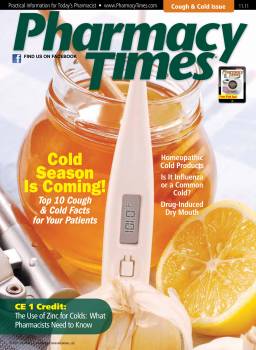Publication
Article
Pharmacy Times
Compounding Hotline
Author(s):
Q:
A physician wrote a prescription for 8% hydroquinone cream. No antioxidants were specified. Please help!
A:
Hydroquinone (dihydroxybenzone) is a hydroxyphenolic compound with a structure similar to melanin precursors. It prevents formation of melanosomes and causes necrosis of existing melanocytes. These properties make it useful in the treatment of skin hyperpigmentation disorders.
Hydroquinone is an oxidizing agent and can turn preparations from bright white to brown ipn a short time; the resulting hydroquinone degradation inactivates it. Hydroquinone concentrations for hyperpigmentation disorders range from 2% to 5%; concentrations greater than that can present stability issues and also may increase the potential for carcinogenicity and dermal toxicity, among other postulated adverse effects.
A literature search revealed no formulations for hydroquinone concentrations greater than 5% in topical preparations. As noted above, hydroquinone presents a particular stability challenge to the compounding pharmacist, and the addition of antioxidants is required to make an acceptable compounded preparation. If the preparation contains greater than 5% hydroquinone, this challenge is increased greatly. One formulation widely reported to produce positive clinical results is as follows:
Kligman’s Formulation
Batch: 240 g
Retinoic acid (0.1%) 0.240 g
Triamcinolone acetonide (0.1%) 0.240 g
Hydroquinone (5%) 12.0 g
Ascorbic acid (3%) 7.2 g
Citric acid (1%) 2.4 g
Vitamin E (400 IU) Contents of 4 capsules
Butylated hydroxytoluene, NF 1.9 g
Hydrophilic petrolatum, 75% 161.19 g
HEB cream (O/W emulsion-vanishing), 25% 53.73 g
Method:
1. Combine powders in a ceramic or Wedgwood mortar and triturate with pestle until finely divided.
2. Add a small amount of water and triturate until a smooth paste forms.
3. Combine and mix both the ointment and cream bases until a homogenous cream is obtained (an Unguator could be used here).
4. Add a small amount of ointment and cream base to the wetted powders and triturate until smooth. Add balance of base by geometric dilution to final weight.
Stability: Studies absent, use USP 30 days (or less, if the compounded preparation turns brown). Some articles suggest 90 days because of the added antioxidants.
Mr. Erickson is director of professional affairs and director of professional services at Gallipot, a Fagron company.
E-mail your compounding questions to: compounding@PharmacyTimes.com







